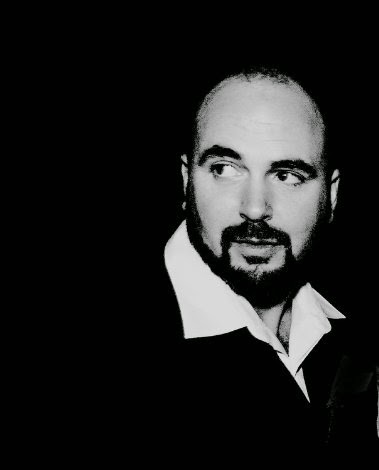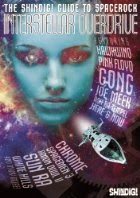 William Cook was born and raised in New Zealand and is the author of the novel Blood Related. He has written many short stories that have appeared in anthologies and has authored two short-story collections (Dreams of Thanatos and Death Quartet) and two collections of poetry (Journey: the search for something and Corpus Delicti).
William Cook was born and raised in New Zealand and is the author of the novel Blood Related. He has written many short stories that have appeared in anthologies and has authored two short-story collections (Dreams of Thanatos and Death Quartet) and two collections of poetry (Journey: the search for something and Corpus Delicti).
His work has been praised by Joe McKinney, Billie Sue Mosiman, Anna Taborska, Rocky Wood and many other notable writers and editors. William is also the editor of the anthology Fresh Fear: Contemporary Horror, published by James Ward Kirk Fiction.
*** William has kindly made five copies of the Kindle edition of Fresh Fear available to give away! Leave a comment at the end of this article, or respond on Twitter or Facebook, to be in with a chance to win one ***
1) As you mention, you’re the editor of the recently published anthology Fresh Fear: Contemporary Horror, in which I’m very pleased to have a story. I’m less familiar with the horror field than I used to be back in the 1980s and 1990s, but even I can see that you’ve got some major names in there, notably Ramsey Campbell and Jack Dann. How did you manage to secure their work for the anthology?
It took a lot of networking and detective work to track down contact details for some of the bigger names I wanted to include in the anthology. I have been a fan of Ramsey Campbell’s for a long time and consider him the premier U.K. writer of horror, so it was important for me to try and secure one of his stories for the publication. Thankfully he agreed to sell me the rights to one of his stories (Wonderland’) and it was one that I had read before and felt was a good fit for the anthology.
Most of the bigger names were approachable; some more generous than others but most willing to part with stories (mainly reprints) for pro-rates if they didn’t feel the contributor rates were applicable. Jack Dann allowed me the use of his wonderfully frightening story ‘Camps’ and is one of the nicest and most generous authors I’ve met. I feel very honoured to have communicated with some of my favourite authors (albeit via electronic/virtual means) with this anthology and for that reason alone I feel it was worth the cost overall; it also proved a real boost to some of the up-and-coming authors to appear in an anthology alongside the likes of Campbell, Dann, Mosiman, Dunbar et al.
2) Are there common themes that emerge from within a number of these stories, or does the anthology cover the full scope of horror fiction?
The only real criterion I had in mind when selecting the stories for Fresh Fear was that they had to contain the element of fear somehow. I leant slightly towards ‘quiet’ horror when and if it was of a high enough standard but the end result was a really diverse range of stories, ranging from quite hard-core horror to more subtle narratives.
One commonality that emerged from the huge pile of submissions was the amount of stories set in post-apocalyptic or dystopian worlds; so I did become aware that the influx of these kind of stories had to be whittled down to give the reader a more diverse reading experience, as was my original intention. But, in answer to your question, I would say that the only real commonality is that the stories are well-written and that they all contain an element of fear that should entertain the readers’ adrenal glands.
3) Is this the first anthology you’ve edited, and how did you get interested in editing anthologies?
Yes, it is the first one that I’ve edited. I have always wanted to create my own horror anthology as I’m a big fan of them having falling in love early on with the Pan (Herbert Van Thal ed.) and Fontana collections of the late 70s and early 80s. It is how I, and I suspect, most other readers of horror have discovered new talents and writers of the genre and continue to do so. My interest stems from my love and fascination with the genre and I hope that I get the chance to edit more over the following years. I have always wanted to put together a very eclectic classical horror anthology with the best illustrations to accompany the selection of my favourite stories. One day.
4) Of course, you’re also known as a horror novelist, with your novel Blood Related [receiving good reviews. Without giving too much away, what can readers expect from Blood Related?
By way of an answer to your question, I sent a copy to a favourite psychological thriller author – Jonathan Nasaw (author of ‘Fear Itself,’ ‘The Girls He Adored,’ ‘When She Was Bad’ etc). Now this guy is the standard by which I measured BR – his novels are usually about depraved serial killers and are very dark, so his reply shocked me in such a way that I had to ask his permission to use it as a blurb. “Dark and deeply disturbing,” was his reply. Apparently, he had to put it down after reading the first section because it disturbed him too much! Another reviewer has summed up BR nicely – here’s how they described the novel:
“William Cook’s presentation of a family of murderers, most notably the twin brothers Caleb and Charlie, is a chronicle that charts the evolution (or de-evolution) of a killer’s psyche. There is a plot in this novel, or rather, a series of events that result in the book’s conclusion (no spoilers here). A revolutionary plot on the manic scale of Charles Manson, a damaged family unit that has been depicted in classic horror films like Texas Chainsaw Massacre and House of 1000 Corpses, and the downward spiral of the novel’s “good guy” all illustrate the environmental conditions which create such monstrosities. Cook did very thorough research; no stone was left unturned, no cause behind the madness unexplored.”
5) You’re also a poet, and of course, there’s a long tradition of horror poetry, stretching back at least to Edgar Allen Poe. What makes for good horror poetry?
There are so many variables and subjective considerations when one makes a value judgement about what constitutes ‘good’ poetry that it is hard to nail down. ‘Horror poetry’ is a fairly loose term and is not as widely accepted as say ‘Gothic’ poems, but recent years have seen the rise of a number of poets who do write poetry that engages tropes most commonly found in horror novels/fiction. An element of dread must always be present – a sense of foreboding; this can be achieved with the cadence and meter of the poem and is also emphasized by the use of onomatopoeia and description.
I’m personally not a great fan of rhyming poetry and prefer subtle use of alliteration and simile – the poems that really speak to me as works of horror are usually succinct and pack a punch. The poem should make the reader draw breath as they read and to twist their thoughts and emotion in a way that will leave a marked impression. Too much horror poetry relies on mediocre rhyme schemes and fails to deliver impact because of it. You can have a fantastic idea and a scary premise that can be delivered effectively with free verse, but as soon as a rhyme scheme is used it comes across as a cheesy Pam Ayers-type limerick. The poetry that does it right is usually well edited and tightly wrought with selective use of words and phrasing.
Some contemporary poets who I feel do ‘horror poetry’ well are Charlee Jacob, Vincenzo Bilof, Lori Lopez, and Jaye Thomas, and Bruce Boston, to name a few of my favourites.
6) Now that you’ve finished work on Fresh Fear, what projects do you currently have on the go?
I am currently editing a collection of my 101-year-old Grandfather’s poetry, which is proving to be a challenge. He is a very prolific writer but has seldom been published due to the fact that he has not really shared his work. So there are many hours of reading and editing to get his work to a publishable stage. I am hoping to have his collection published by the end of August, so that he can actually hold a copy in his hands of his own work before he shuffles off this mortal coil. I am also working on a new collection of verse and essays titled ‘Beyond the Black Gate’ – essentially an exploration of depression and its effects and origins. Half of the book will deal with the darker side of depression and the latter half will deal with coping mechanisms and hope. I have a few collaborations I’m working on also including a collection of YA horror stories. For more on all my upcoming and ongoing projects, please come and visit me at my website: http://williamcookwriter.com
7) I know that you’ve put a lot of effort into building up your social media presence to create a sales platform for your work. What advice do you have for writers who think social media is not for them, or who are just starting to make use of it?
Unfortunately it is a necessary evil but if you can, don’t view it as such. Without the various social medias I would not have achieved the publishing goals I have set for myself so far. I would not have met the publishers, editors, fellow writers, and most importantly – readers. Network, network, network, is the rule of thumb with social media. Use the various platforms for the promotion of your books but use common sense. Don’t over-post things or you will lose the contacts that you have quite quickly – no-one likes a ‘spammer.’
Despite Facebook being the largest social network available it is pretty useless for sharing posts that you make – i.e. you do not have share options that link your FB posts with the likes of Twitter, Pinterest, Google+, MySpace, LinkedIn etc. I believe it is best to have a platform such as a website if you are serious about promoting your work online. WordPress, Blogger, Wix, Tumblr etc are all viable options and best of all they are free.
Once you have your website/blog set up, then you can use it to share your posts via the social media sites. Most blogs/websites have options for automated sharing of your posts which can save lots of (writing) time and is the most effective way of cross-market promotion. There are countless tutorials via each of these platforms in the help sections or on YouTube.com etc.
Essentially, you need an online presence if you are to succeed as an author in this day and age – especially if you are going down the independent or self-publishing route. The one piece of advice I think is important is to not let it (social media) consume you – I have wasted far too much time over the years on it when I should’ve been writing but in saying that, I have learnt many valuable lessons too. One other point is to remember who it is you are trying to market your work to – the reader.
8) You’ve recently been involved in setting up the NZ Horror Writers’ Association. Who should get involved, and why?
Well it was more of an experiment than anything else really. I was curious as to how many New Zealand authors write horror and whether there was a need for such a group. So far the response has been positive but I think a more apt title for the group would be: New Zealand Dark Fiction Authors. If you write dark fiction/horror and want a forum for your ideas and to network with other like minds them it would probably be a good place to start.
Many of the members are also active members in groups like the AHWA (Australian Horror Writers Association), SpecFicNZ and the HWA and use the group to share open submission calls and industry news. The criteria for membership is pretty simple – if you are a New Zealander and you write within the genres mentioned, come join up.
9) In addition to those with stories included in Fresh Fear, who are up and coming horror writers that readers should be looking out for?
There are so many good writers out there with little or no recognition. Some of the more promising authors that I have had the pleasure of dealing with are as follows: Vincenzo Bilof, Carole Gill, Scathe meic Beorh, Lindsey Beth Goddard, William Malmborg, Anna Taborska, Dane Hatchell, Thomas A. Erb.
There are so many and I’m sure to have missed out others. For a full list of recommended authors, please come and visit my website where I have a full page devoted to writers who are good at what they do.
*** William has kindly made five copies of the Kindle edition of Fresh Fear available to give away! Leave a comment at the end of this article, or respond on Twitter or Facebook, to be in with a chance to win one ***








